By Jordan Luckey
The Texas rig is one of fishing’s most beloved setups. From largemouth and smallmouth bass to pike and pickerel, the Texas rig is a simple, yet effective, multi-species setup. In this article I will highlight tips and tricks to help you more efficiently utilize the Texas rig.
How to Texas rig: Using a wide gap or offset worm hook, feed the top of your lure through and over the eye of your hook. Simply turn your lure and hook through the back side. If done correctly, your lure should sit straight in line with the hook. Keep in mind that hooks come in a variety of styles and sizes, so be sure to pick one that best suits your target species or style of fishing. Soft plastic lures such as worms, creature baits, and crawfish imitations are some of the best presentations on a Texas rig.
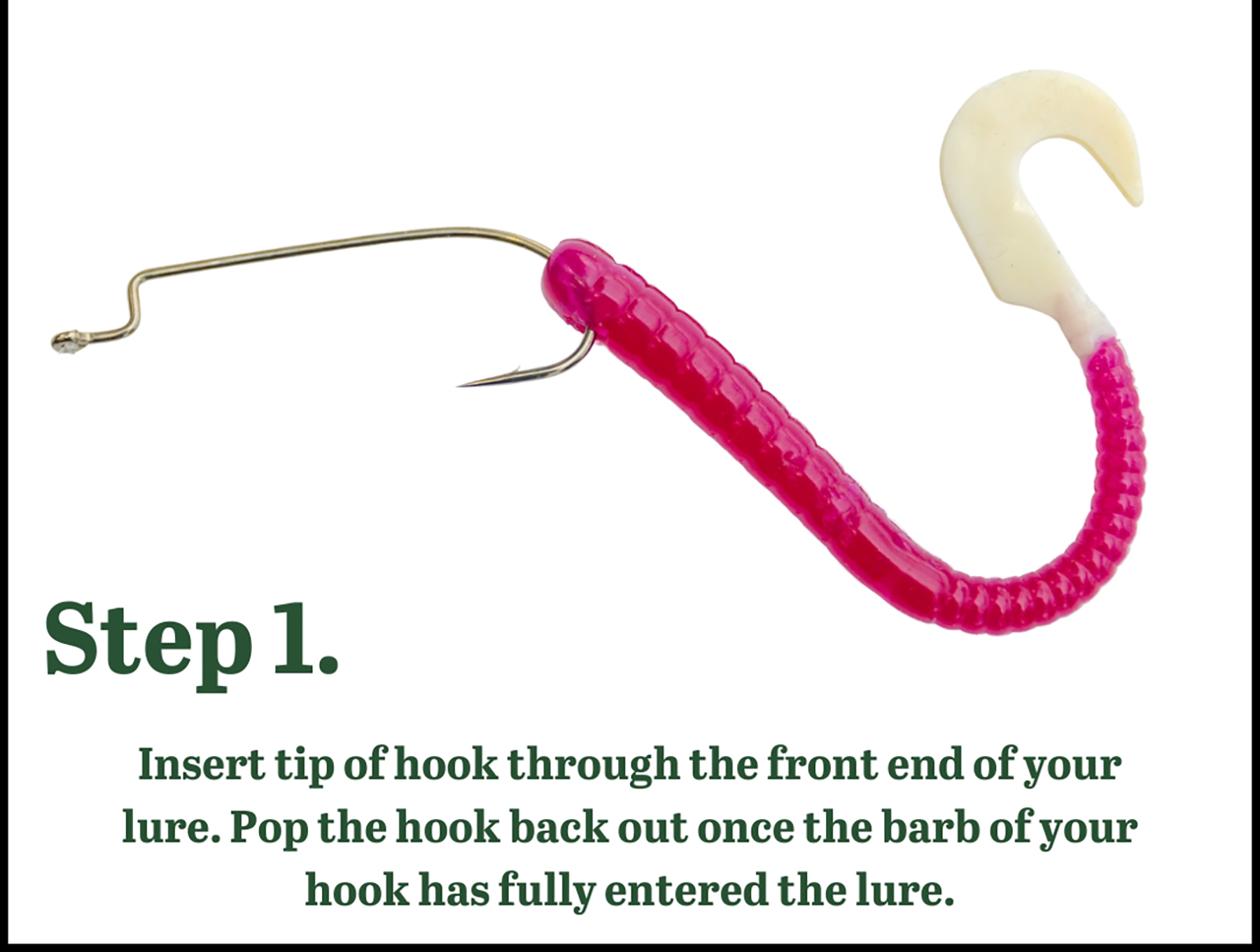
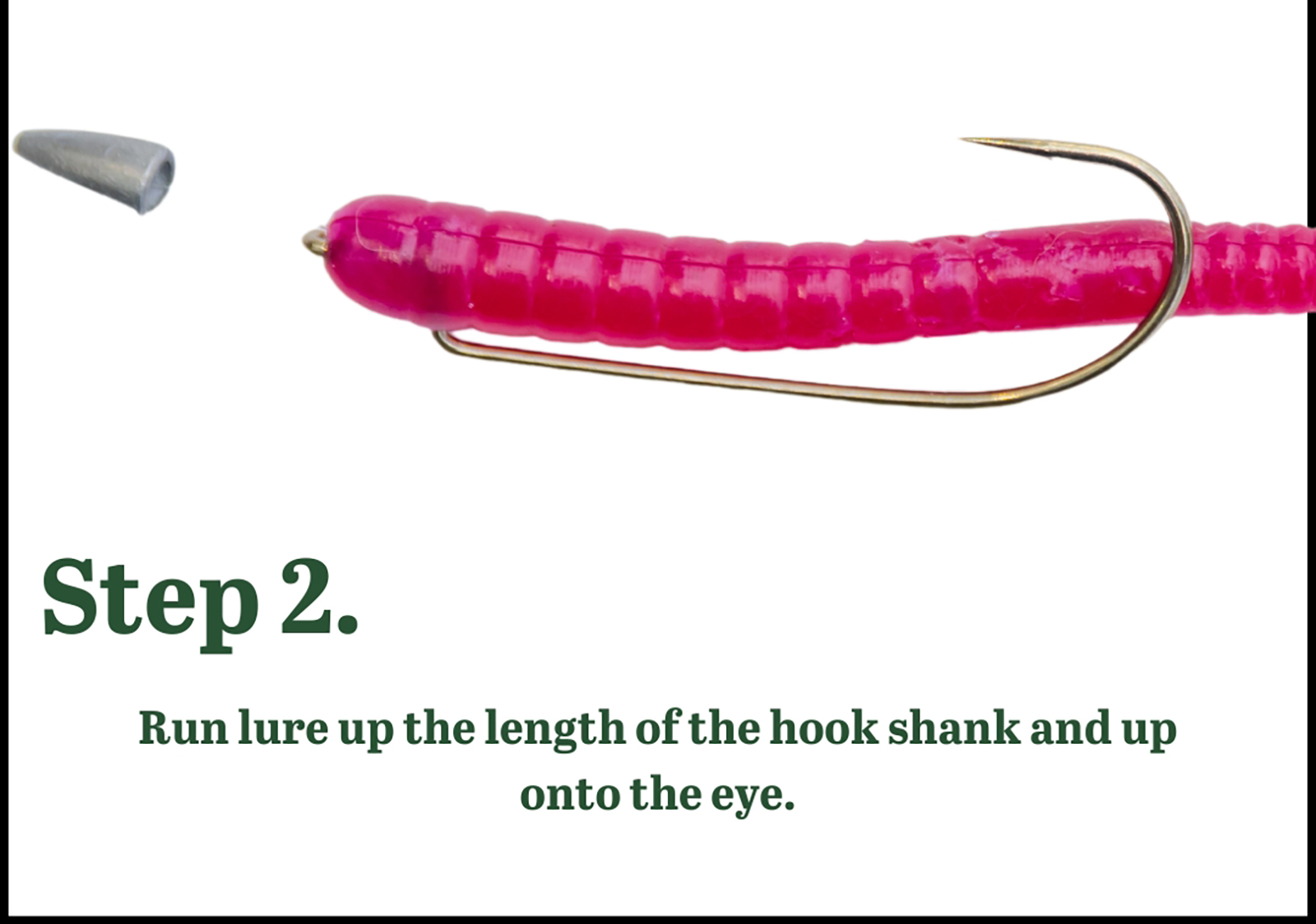
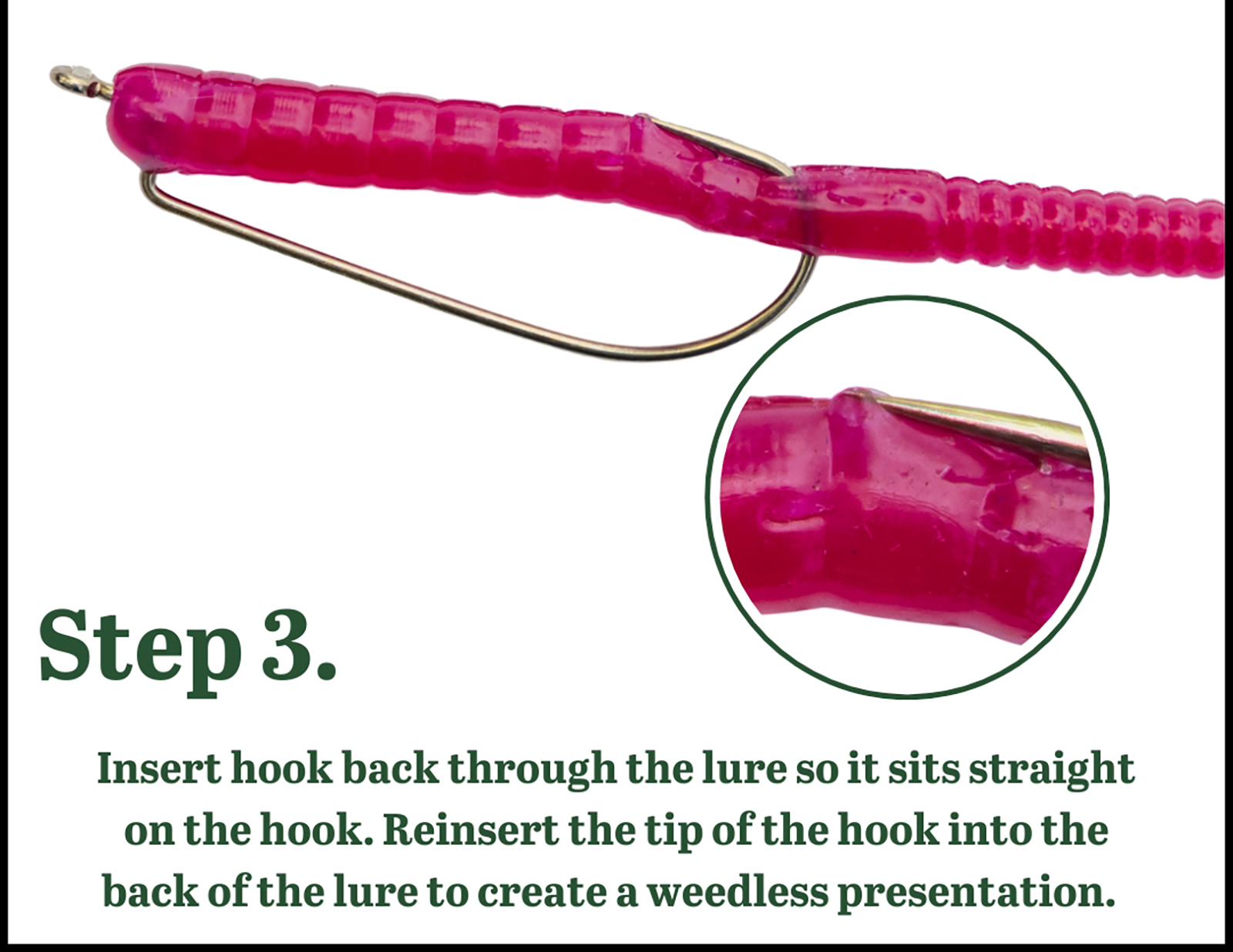
Illustrations/photos by Meghan Marchetti/DWR
Tip 1 – The Weedless Hook: One of the many benefits of the Texas rig is the ability to make your lure weedless. By poking the tip of your hook back through your worm or creature bait, you can ensure that weeds and algae won’t impact the action of your lure or interfere with your hookset.
Tip 2 – The Bullet Weight: The addition of a bullet weight to your Texas rig will help your lure reach its desired depth in the water. It is crucial to use an appropriately sized weight relative to the depth of the water you are fishing. If the weight is too heavy, the lure will drag the bottom and risk getting snagged; conversely, a weight that is too light may not reach the depth you are targeting. For shallow waters (1 to 5 feet), I recommend a 1/16-ounce to 1/8-ounce bullet weight, which helps create a slow-falling lure. Deeper waters (10 feet and deeper) may require weights ranging from 1/4-ounce and heavier. Additionally, using a bobber stop above the free-sliding bullet weight will keep it in a fixed position, which can be useful when fishing heavy cover such as thick brush or grassy banks.
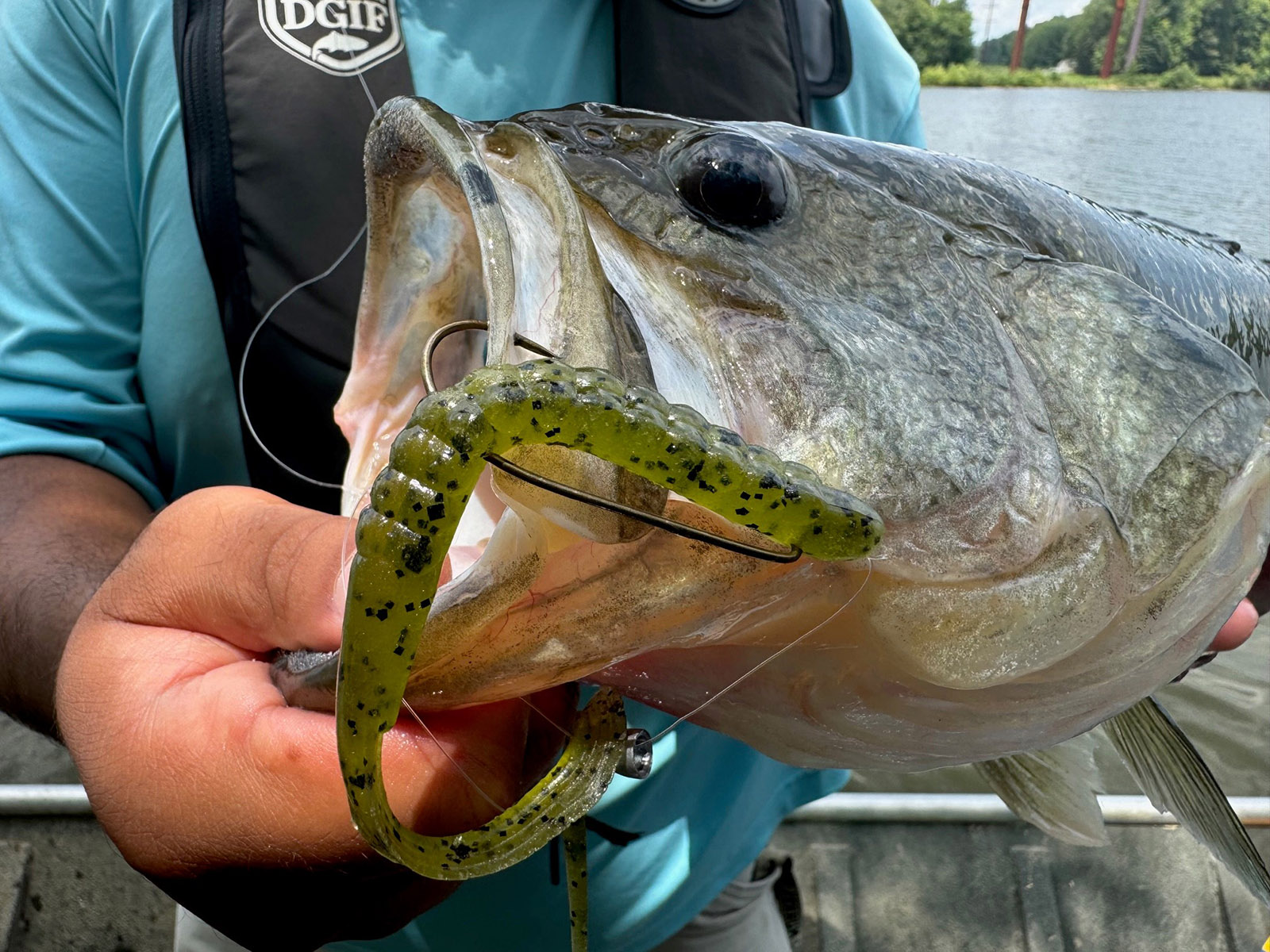
A Texas rig in action. Photo by Alex McCrickard/DWR
Tip 3 – Slow Roll: The Texas rig is best fished using a slow retrieve. Try fishing parallel to the bank, or casting on structures or under overhangs to target areas where bass might be stacked up. Working your line back slowly helps create a presentation that is appealing to fish. However, don’t be afraid to add some twitches or pops to draw out any bass that may be hesitant to bite. Let the fish dictate your retrieval—motions such as short quick pops or sweeping your rod then picking up the slack are other ways of adding variation to your lure’s presentation.
Tip 4 – The Hookset: Once you finally hook into the bass you’ve been targeting, make sure to reel in slightly before setting the hook to add tension on the line. Your hookset is what will bring that hook back out of your lure and into the fish, so keeping tension is critical. Keep that tension on your line throughout the fight to help land your fish on the bank or flip it into your boat.
The Texas rig is a great setup for fishing warm water ponds from the bank or hitting deep underwater structures off your johnboat. Fish it weightless in shallow waters or add a bullet weight to help reach deeper holes. The most important part of fishing this setup is patience. Using an ultralight combo or sensitive rod can help you really feel out the bottom of the water and react better to bumps and bites. By using the tips above, the Texas rig can become your next favorite setup and help you catch more fish.
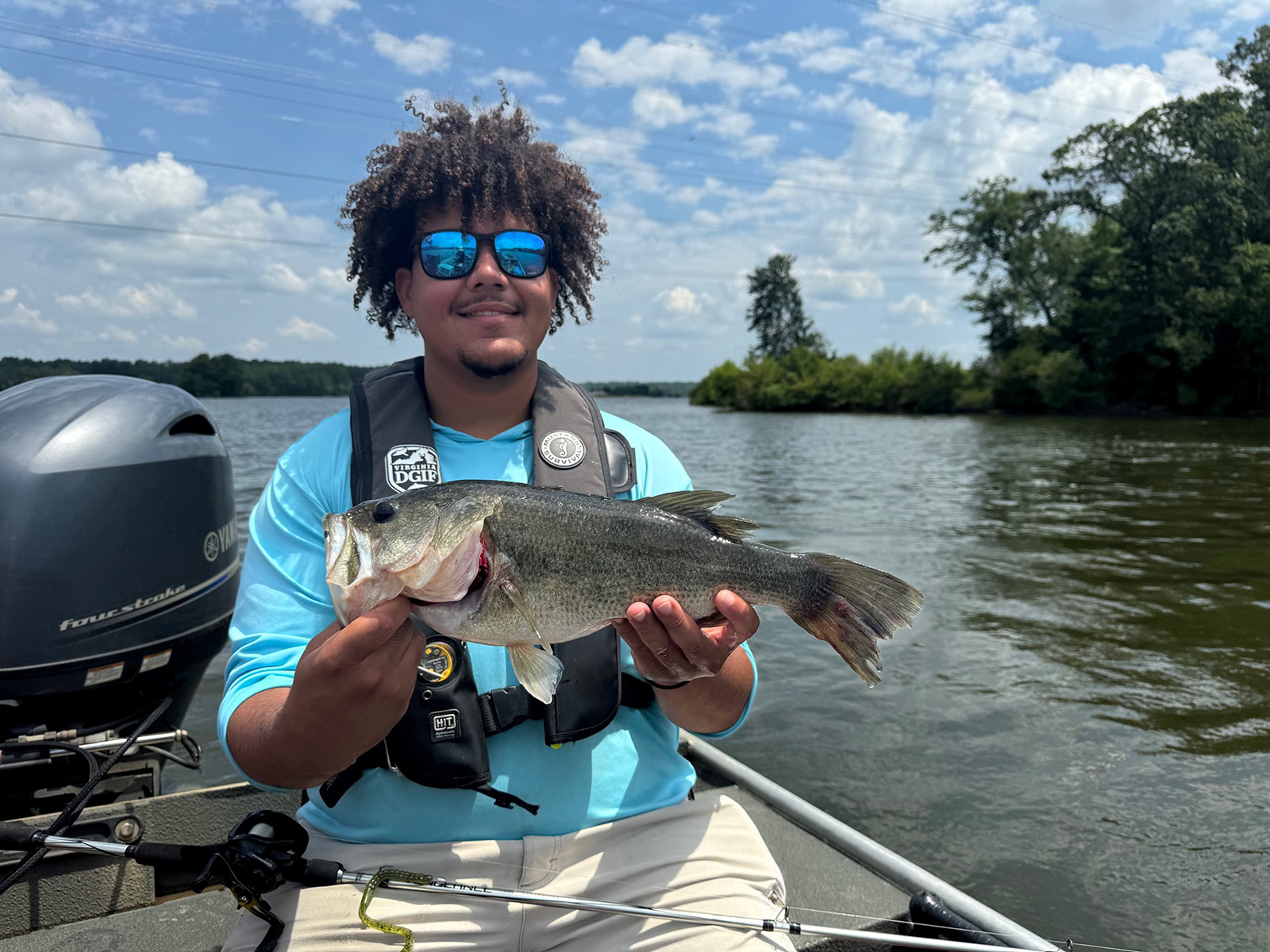
The author with a largemouth caught on a Texas rig. Photo by Alex McCrickard/DWR
Jordan Luckey was the DWR aquatic education and outreach intern during the summer of 2024.


